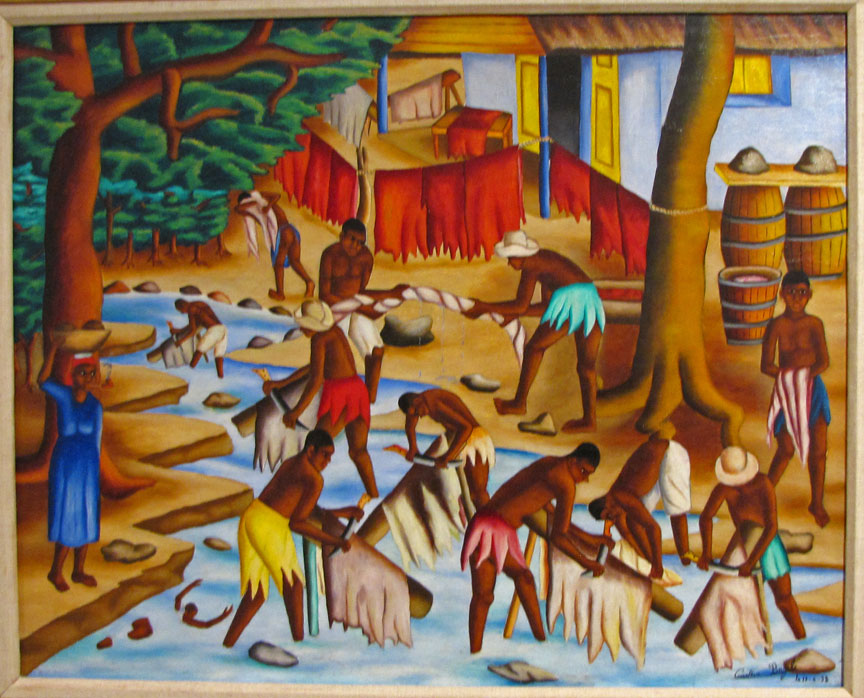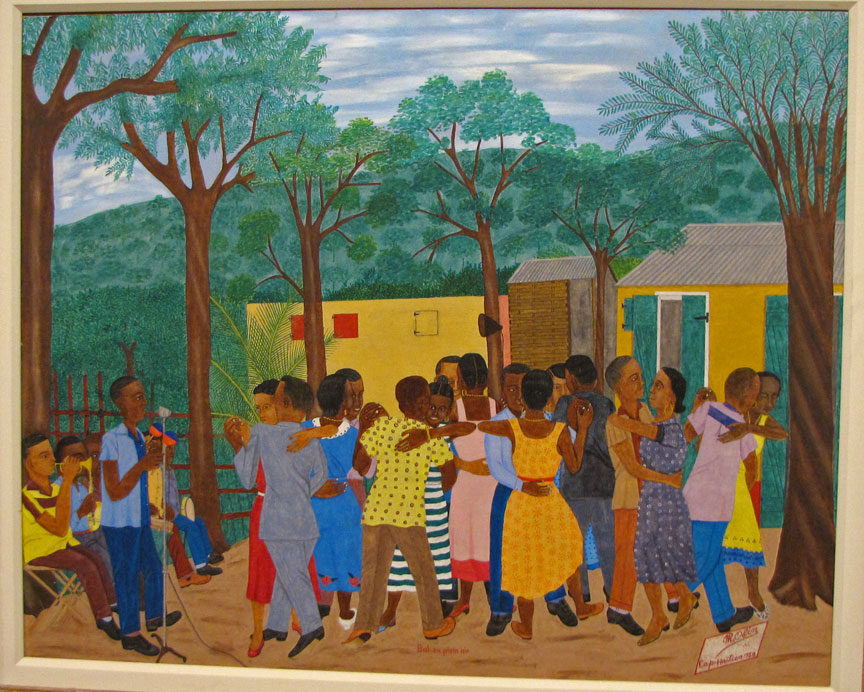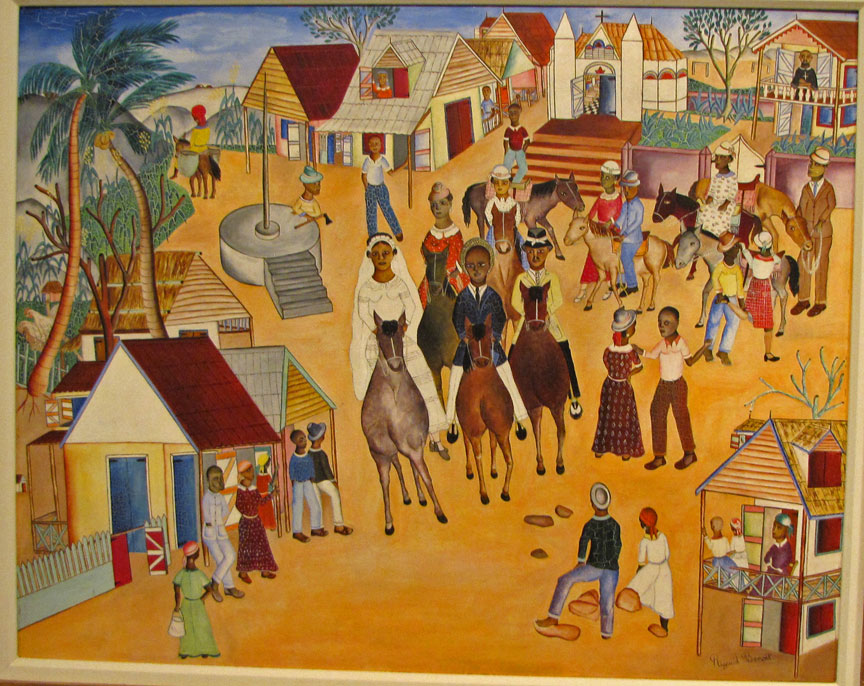

Haitian Art
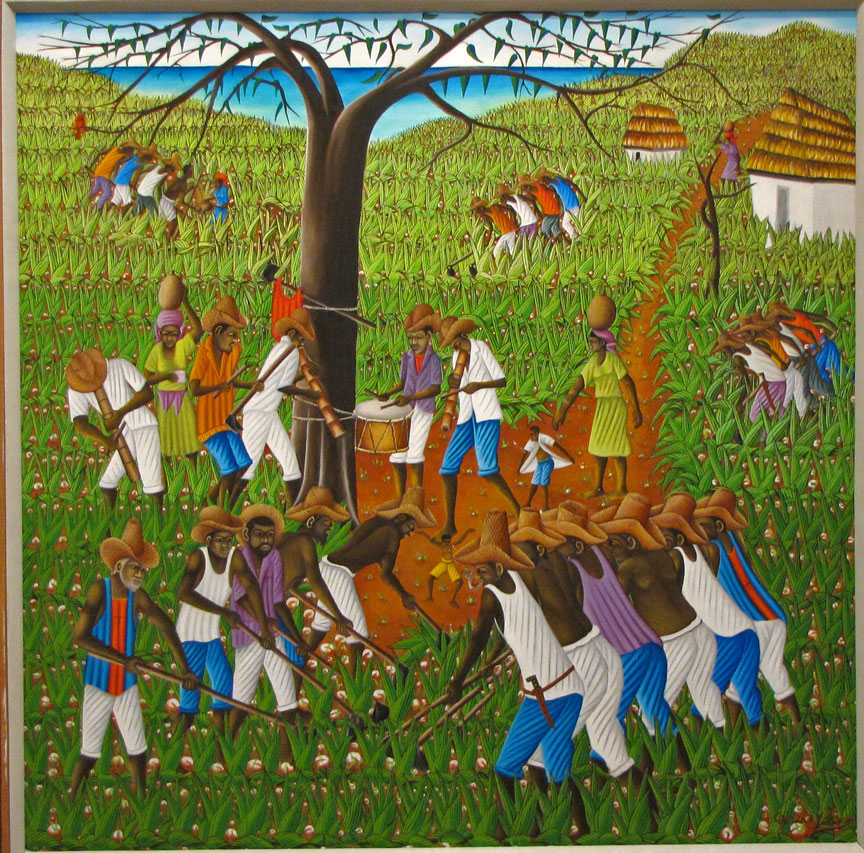
Brilliant colors, naive perspective and sly humor characterize Haitian art. Big, delectable foods and lush landscapes are favorite subjects in this land of poverty and hunger. Going to market is the most social activity of country life, and figures prominently into the subject matter. Jungle animals, rituals, dances, and gods evoke the African past.

In a country of political oppression, one tends to speak in fables. Artists
paint in fable as well. People are disguised as animals and animals are
transformed into people. In an illiterate land, symbols take on great meaning.
For example, a rooster often represents Aristide and the red and blue colors of
the Haitian flag often represent his Lavalas party.
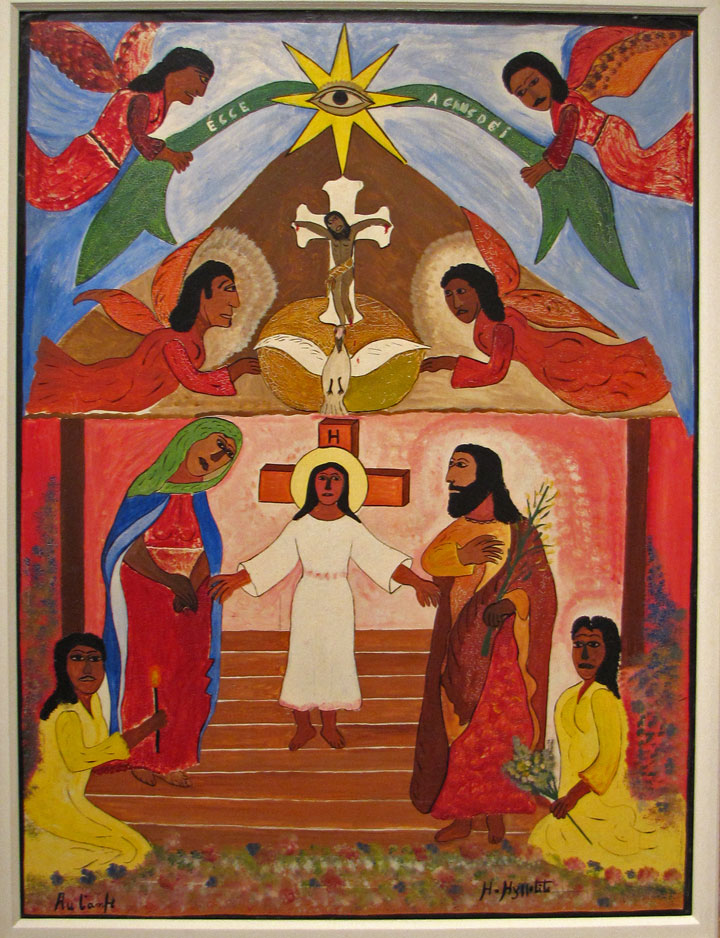
Many artists cluster in Ďschoolsí of painting, such as the Cap Haitien school,
which features depictions of daily life in the city, the Jacmel School, which
reflects the steep mountains and bays of that coastal town, or the Saint-Soleil
School, which is characterized by abstracted human forms and is heavily
influenced by Vodou symbolism.
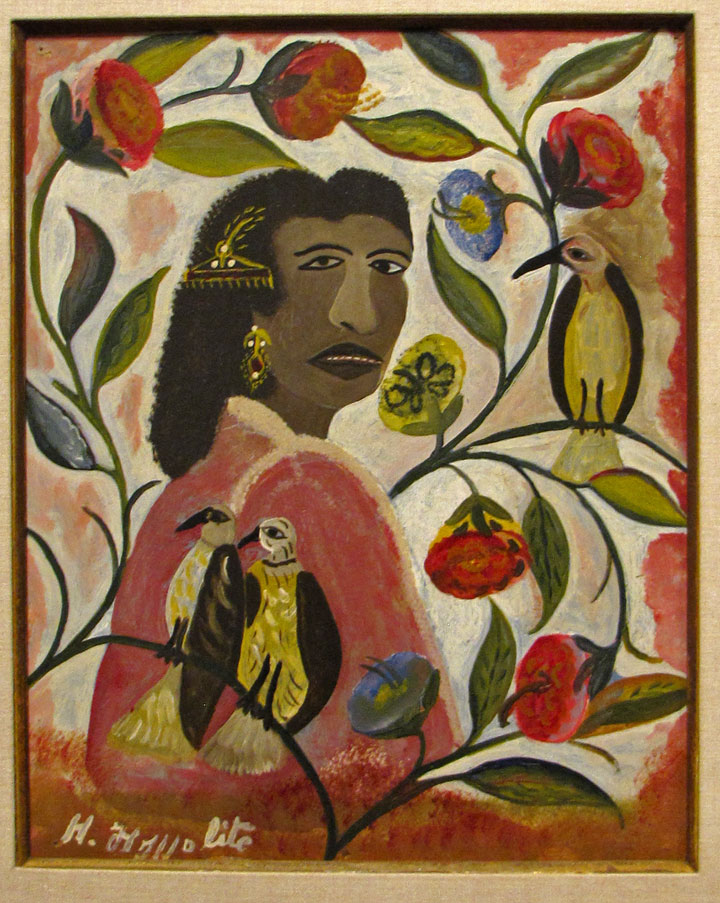
The painters of the Artibonite region in central Haiti, where Hopital Albert
Schweitzer Haiti is located, have developed their own style, which is quite
recognizable.
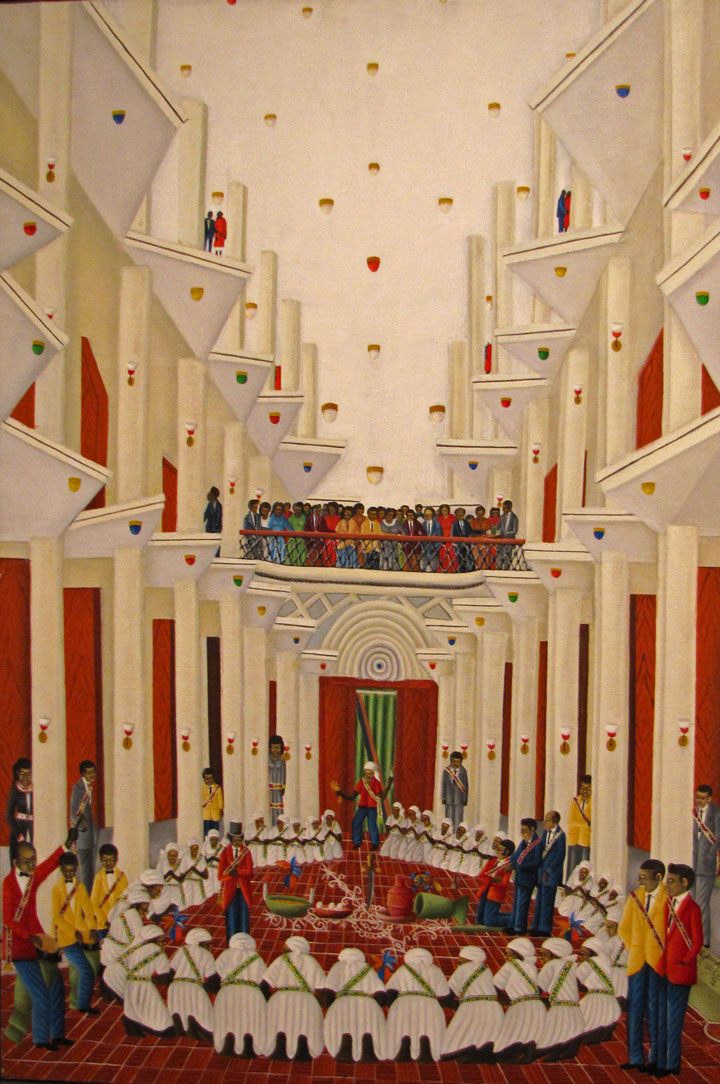
The style began with Saincilus IsmaŽl, the recently deceased great master of the
region, who was influenced by Byzantine art he had seen in books. IsmaŽl began
to paint in 1956 after visiting the Centre díArt in Port-au-Prince. His
paintings are marked by exquisite detail. Every article of clothing, house, or
tree is painted with a different intricate geometric pattern.
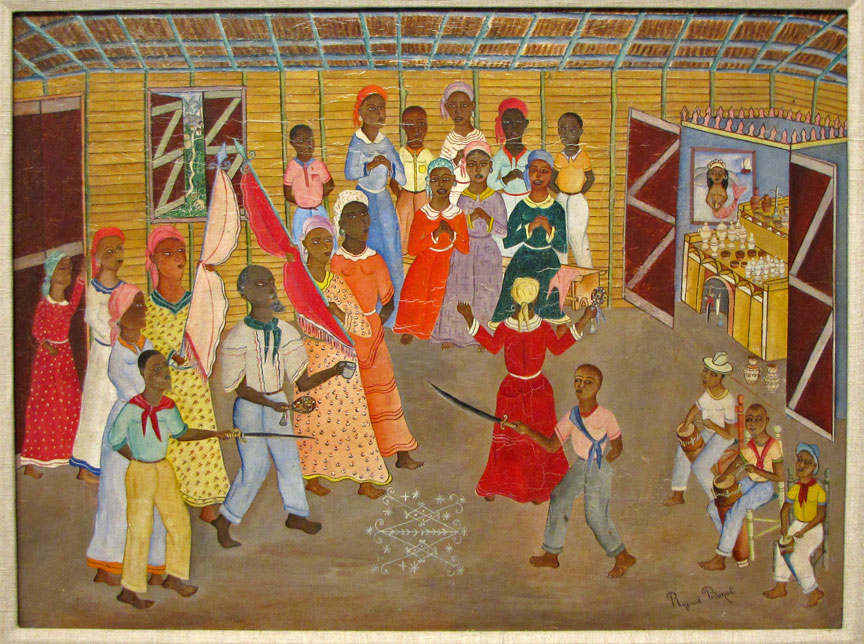
Dťlouis Jean-Louis grew up in Petite RiviŤre under the influence of IsmaŽl.
Although he worked under IsmaŽl for 15 years, he never had formal painting
lessons. He began painting to make money, but gradually began to paint carefully
executed scenes from his imagination.
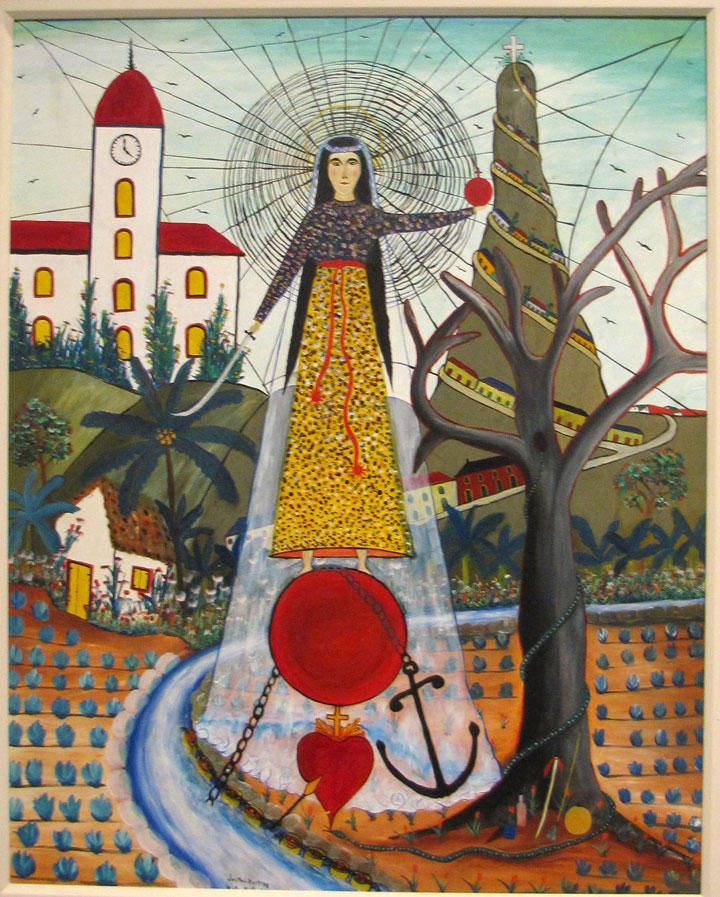
Alix Dorlťus also learned to paint with IsmaŽl and Mrs. Mellon. He paints all
day long and will paint anywhere he feels the spirit to motivate him. His best
paintings are detailed depictions, like activity maps, of daily life in the
Artibonite Valley.

Ernst Louizor is considered one of the best impressionist painters of Haiti.
Louzor was born in Port-au-Prince on October 16, 1938. After high school (Lycee
Toussaint L'Ouverture '57) he worked in the tax section of Customs. Louizor's
painting career began in 1951 when at the age of 13 he joined the Centre díArt
and studied under Wilmino Domond. He later entered the Academie des Beaux-Arts
shortly after its founding in 1959 and furthered his studies with George
Ramponeau. Louzior has many disciples including his wife Gerda Louizor. He has
exhibited in Europe and the U.S.
Text from Wikipedia
